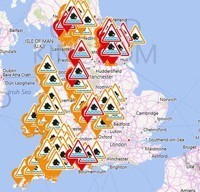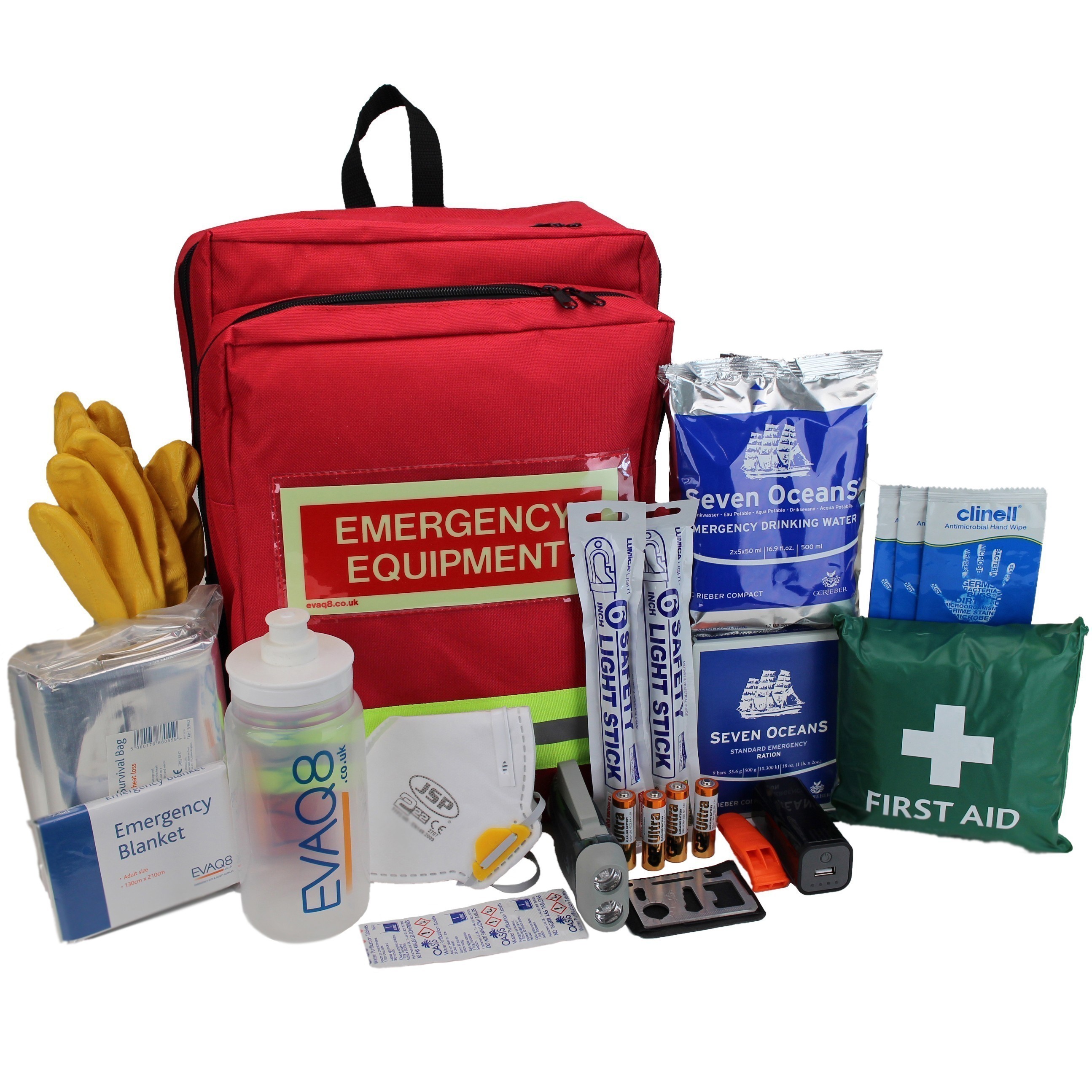Why Do I Need An Emergency Kit
What is an Emergency Kit? Why do I need an Emergency Kit? | |||
 | Self-sufficiency for ResilienceIn the event of a major incident, emergency or disaster, the authorities may become overwhelmed with the scale of the response. The emergency services may not be able to respond to the immediate needs of everyone. Response times could stretch from minutes to hours or it may be days before help arrives. It is, therefore, vital that you can support yourself and your family for an extended amount of time in the event of a major incident. Increasing UK storms and flooding may mean that thousands of people are left without power and clean water supplies for extended periods of time and there are other risks (UK National Risk Register). You may need to survive, in adverse weather, without electric power, heat, gas or communication for 72 hours or longer; see blog what you must plan and prepare for. Employers and Businesses alike should plan to support their customers, guests and staff in emergency or disaster situations. In short, your Business Continuity should include contingencies to be self-sufficient for at least three days in the aftermath of a major incident. For more see Business Preparedness, standard and bespoke Workplace Emergency Kits. | ||
What kind of Emergency Kit do I need? | |||
Example of a Standard | Evacuation & Shelter-in-Place Your emergency kit should be packed and ready to go in case you need to evacuate immediately. Your emergency kit should also provide supplies in case of lockdown - a sheltering in place scenario. The Go Bag contains your personal emergency supplies pre-packed in an easy-to-carry solution, usually a sturdy backpack. These are the items you will need if you have to leave your home or workplace immediately. In addition to essential supplies you should pack personal items, communication kit, and copies of important documents. Store your Go Bag in a safe and secure location ready to be grabbed at a moment's notice. This type of kit is also known as an emergency grab bag, bug-out bag, evacuation pack etc. While a Go Bag is an essential part of your emergency preparedness for evacuation, in the event of a major incident, the authorities are equally likely to issue shelter-in-place advice i.e. GO IN - STAY IN - TUNE INIn these situations, your go bag acts as a fully-stocked Emergency Preparedness Kit ready for sheltering in place or lockdown. Consider that you may not have electric power in your home or your workplace. Other utilities such as water mains, heating gas, telephones and the internet may become disrupted leaving you vulnerable unless you take personal preparedness measures. Also, consider the possibility of structural damage brought on by floods, landslides, high winds, earthquakes or other impacts (explosions, blasts etc.) This may render your home or workplace unsuitable for sheltering in. One alternative is an outdoor space nearby, such as a garden or park, or an indoor public evacuation shelter. Irrespective of whether you can shelter at home, outdoors or at a public venue, your Emergency Preparedness Kit should be ready and packed with long-life food and water, shelter supplies, and other survival kit and placed in an easy-to-reach location. Your emergency preparedness kit should be easy to move as local flooding may force you to relocate to an upper floor, while landslides or blasts could cause structural damage which may force you to set up an outdoor shelter. The Emergency Preparedness Kit is also known as a disaster kit, earthquake survival kit, etc. How do I build my own Emergency Kit?Also see Survival Food and how to make your Emergency Plan. | ||







